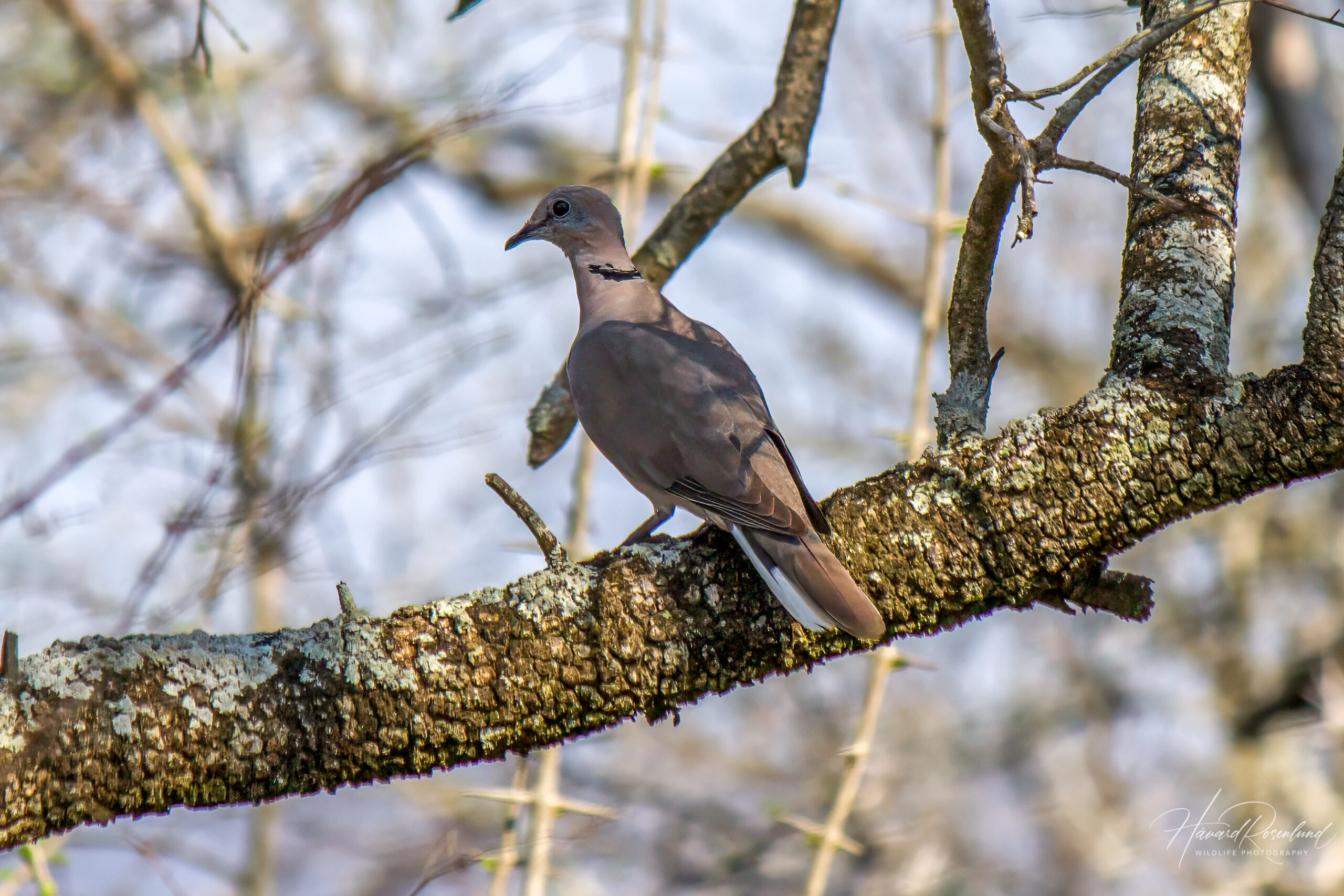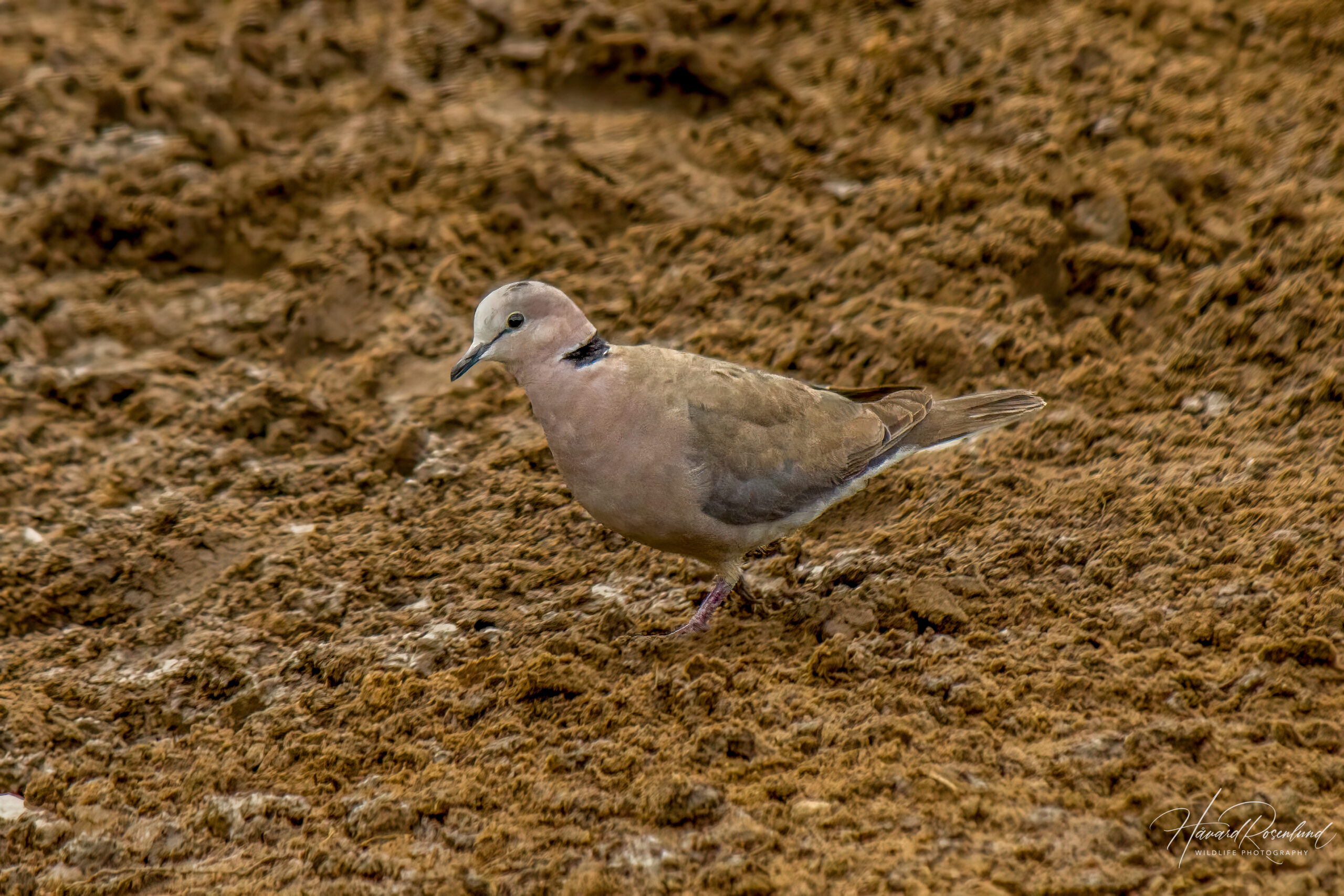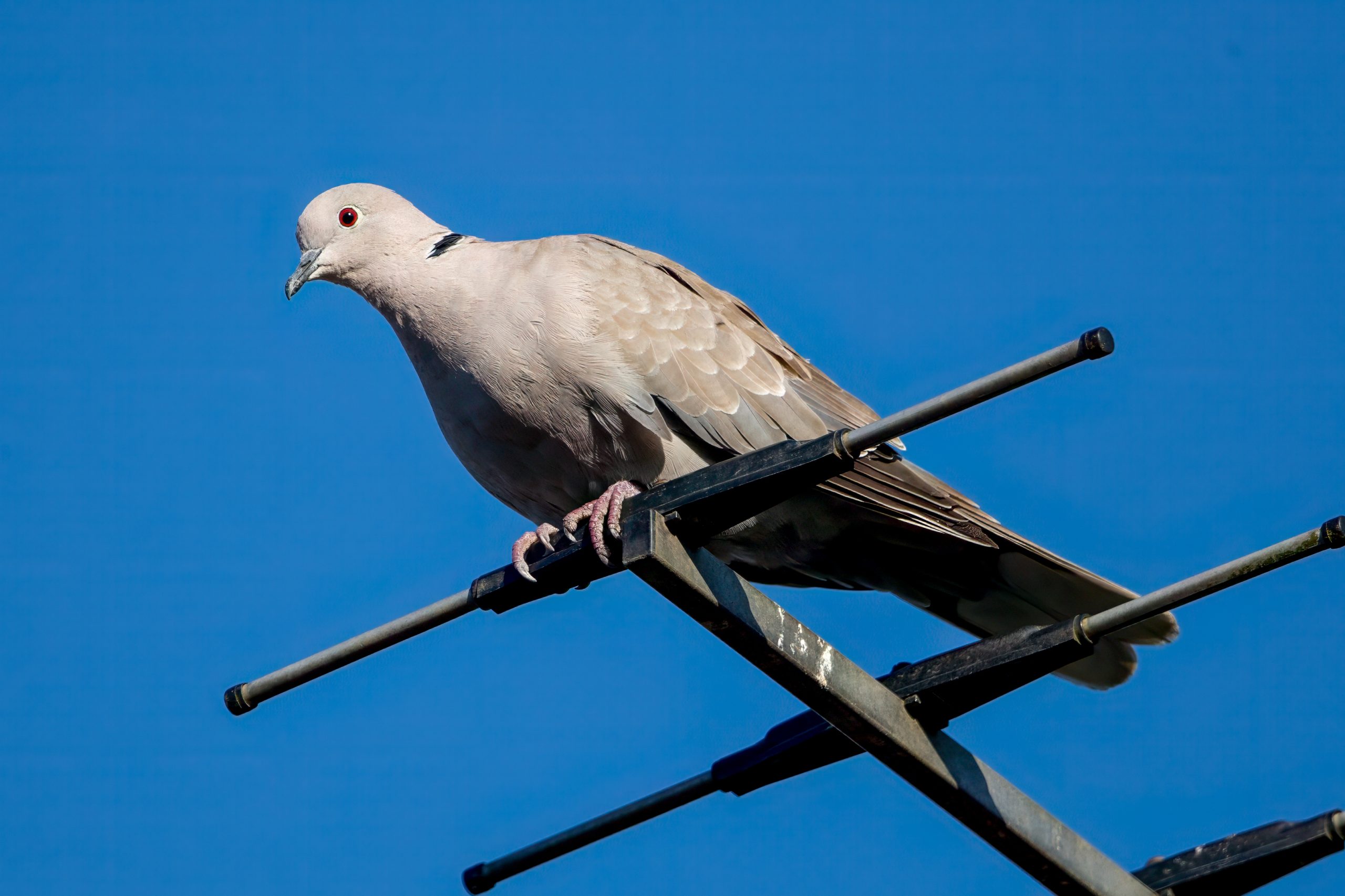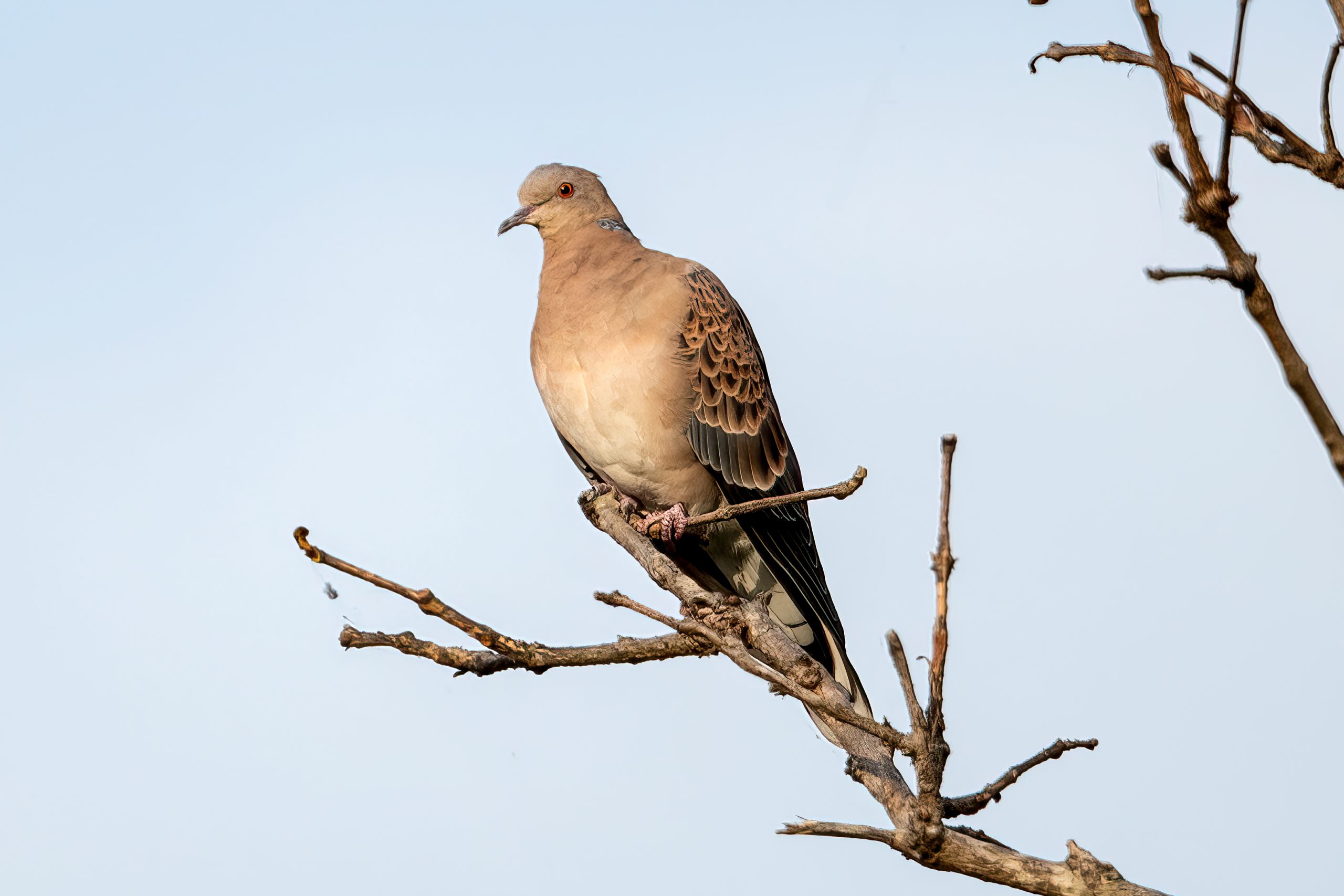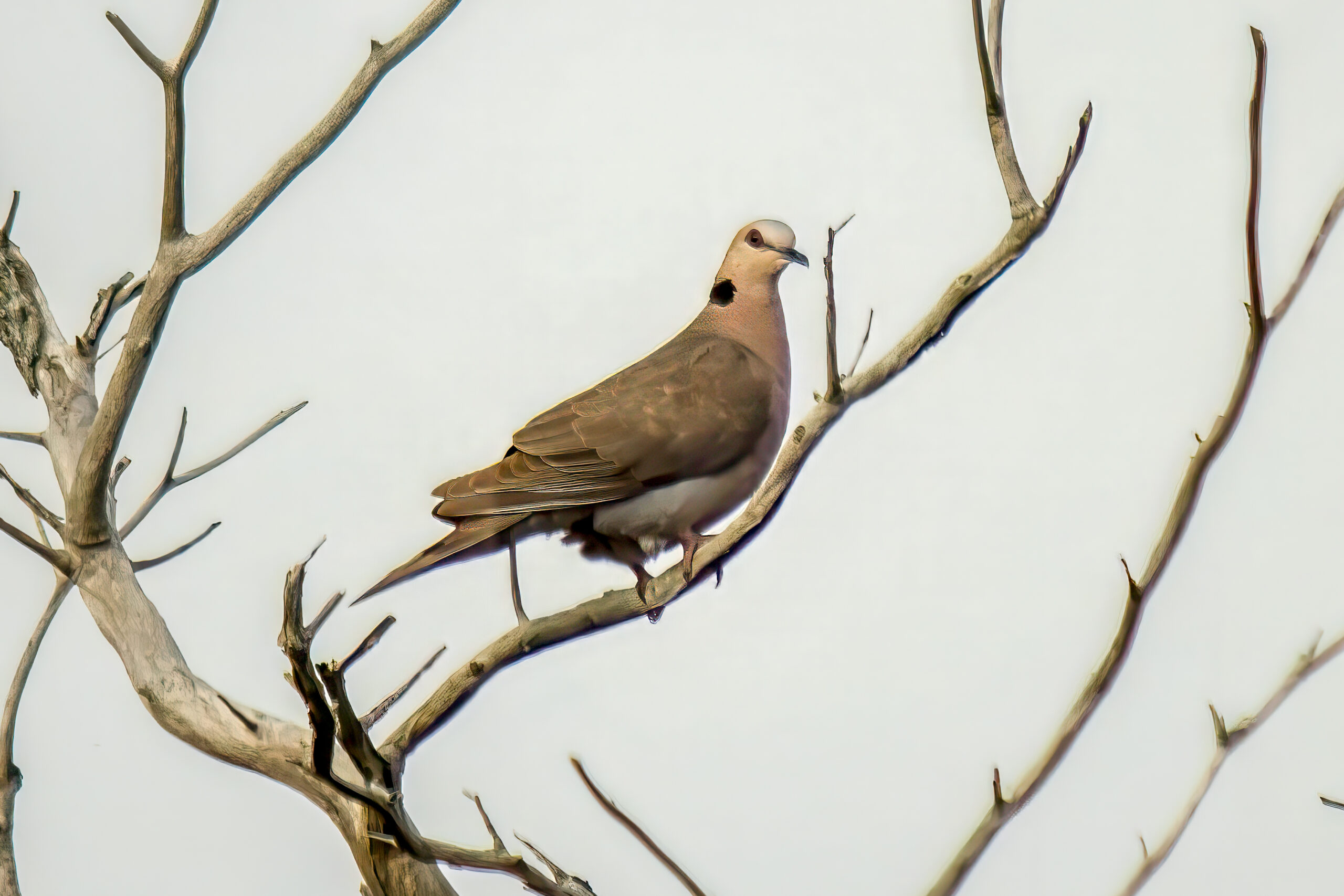Description
The ring-necked dove or Cape turtle dove (Streptopelia capicola) is a common and widespread species of dove in sub-Saharan Africa. Colors are dull brown to grey, with the upperparts darker than the rest of the body. Underparts are paler and turns whitish on the belly. It is similar to many related species with half-collars on the neck, but can be distinguished from other species from its tell-tale call often heard early in the morning in many African reserves as a repeated “kuk-COORRRR-uk“, often interpreted to sound like “work harder” or “how’s father”. Shares much of its range with the larger red-eyed dove (Streptopelia semitorquata), and can be separated by the size difference, as well as having a lighter coloration and no red eye. The ring-necked dove grows to lengths around 25–26.5 cm (9.8–10.4 in) and weighs 92–188 g (3.2–6.6 oz).
Diet & habitat
Ring-necked doves are found in many habitats and will only shy away from dense forests and desert sand dune habitats without water. It is commonly found in open woodlands, grasslands, and savannah, and is often found in farmlands, parks, and gardens in suburban and urban areas. The diet consists predominantly of seeds, with fruits, berries and invertebrates eaten on occasion. Much of its foraging is done on the ground.
Social behavior & nesting
The ring-necked dove is often found alone or in pairs. It is sometimes found in larger flocks around roosts, and in areas with abundant food and water. It is a monogamous and territorial breeder, and egg-laying season is year-round. Nests are often made in the fork of a tree with dense vegetation cover. The nest is made of twigs, grass, roots and sometimes pine needles. Sometimes similar nests made by other bird species are used. One to two (rarely four) eggs are laid and incubated for 13-16 days by both parents. After chicks are hatched, they are fed by both parents and will leave the nest after 16-17 days. They reach independence after another 12 days.
Status
The ring-necked dove is widespread and common throughout its large range in sub-Saharan Africa and there are no immediate threats to the species. It is listed as least concern on the IUCN Red List.





